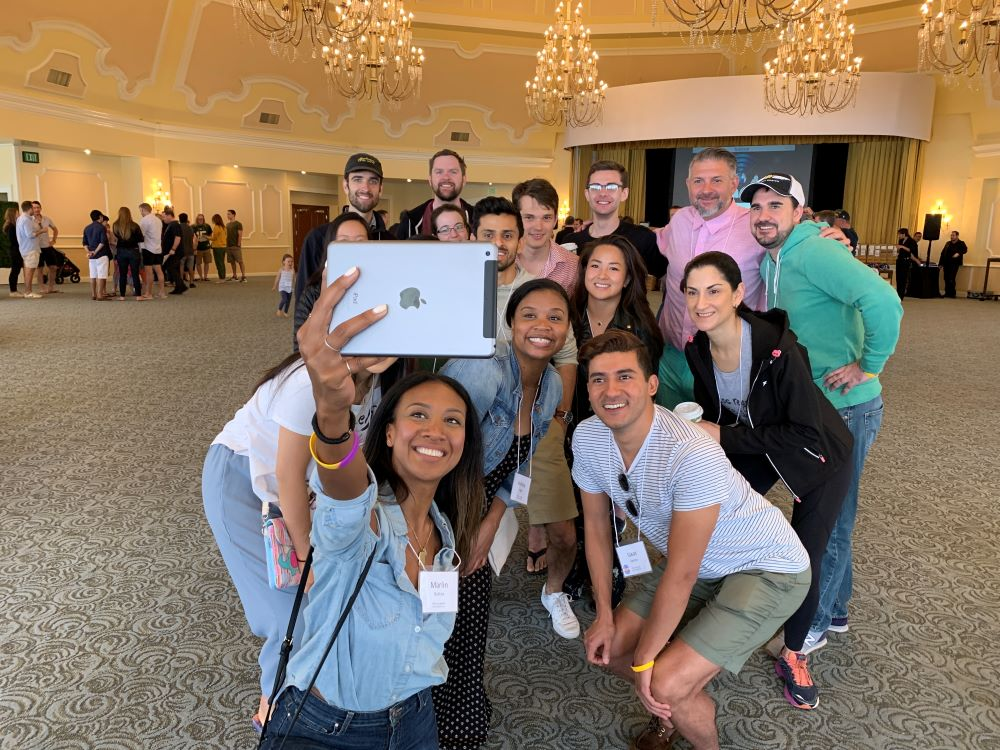Planning and executing a meeting that mixes attendees across job titles and organizational seniority levels adds an extra layer to the myriad of responsibilities inherent in producing any event.
Creating an environment that fosters cross-hierarchical communication and socializing is a challenge that may seem easier said than done, but by implementing some key strategies and meetings formats, getting C-suites to walk hand-in-hand with the rank-and-file—at least for the few days of the meeting—is an achievable goal that will leave everyone glad they collaborated.
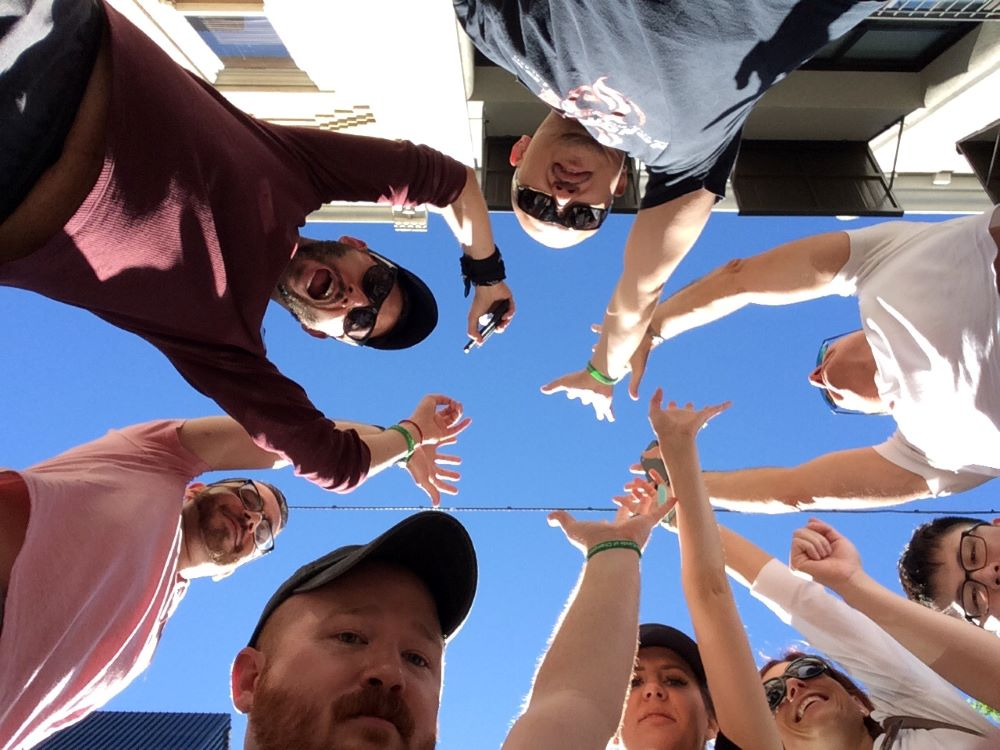
(Credit: Wild Rooster Events)
“I think that organizations are much nimbler now; they’re flatter than they have been in the past,” said Jesse States, director of MPI’s MPI Academy and an industry-leading expert on meeting formats and their relationship to achieving objectives. “But the breaking down of barriers is not just about the hierarchy; it’s really about creating a safe place to talk about challenges and come up with solutions.”
[On Topic: Mix Up Your Learning Formats to Get Your Attendees’ Attention]
No matter the format, meeting organizers must enter into the planning process with a firm objective for the outcome and strategies to achieve that objective.
“The first thing to realize when you design to create engagement is there has to be a strategy and a purpose,” States said. “Is it to break down the barriers of the hierarchy? To introduce new staffers that haven’t met? What is the ice you want to break and what is the activity you want to implement to accomplish that purpose? If you end up designing it before you have the purpose, you’re going to end up in a completely wrong place.”
States and her MPI Academy colleagues implement a variety of meeting formats to conquer these and other objectives either at MPI events, such as its World Education Congress, or for organizations that hire or partner with MPI Academy to help facilitate the education at their meetings. Indeed, the decision of whether to hire a professional facilitator is also a key consideration that must be addressed early on in the meeting planning process.
How to Create Cross-Hierarchal Engagement at Meetings
A key to creating cross-hierarchal engagement is to implement meetings formats that don’t appear to force interaction in a staged fashion.
“It’s really an icebreaker, and no one wants to do an icebreaker,” States joked.
States said that some interesting session formats to consider include a Spectrogram format, in which participants make a decision or share their opinions on a topic by standing up and moving to a space occupied by those with similar opinions.
“You might be standing next to someone who is your superior, or from a junior level, and you develop a certain camaraderie because you think the same about a topic,” States said. “Pretty soon, everyone’s beginning to think that engagement is okay, and they’re beginning to think they’re in a safe space for that engagement.”
Another interesting format is a “Quescussion,” in which participants can only use questions to advance the session. The questions are written on flip charts and participants can only “answer” the question with more questions. After the question period is exhausted, the group can get down to recommending possible solutions to the issues.
“It’s all about encouraging that open conversation in a fun and unique way that makes it seem less stressful and a little more safe,” States said, adding that session organizers should also provide formats that recognize and comfortably engage the introverts in the group, which is often overlooked. “Given how different everyone is, there are so many different perceptions that need to be broken down, so can we design the right one to help us get there?
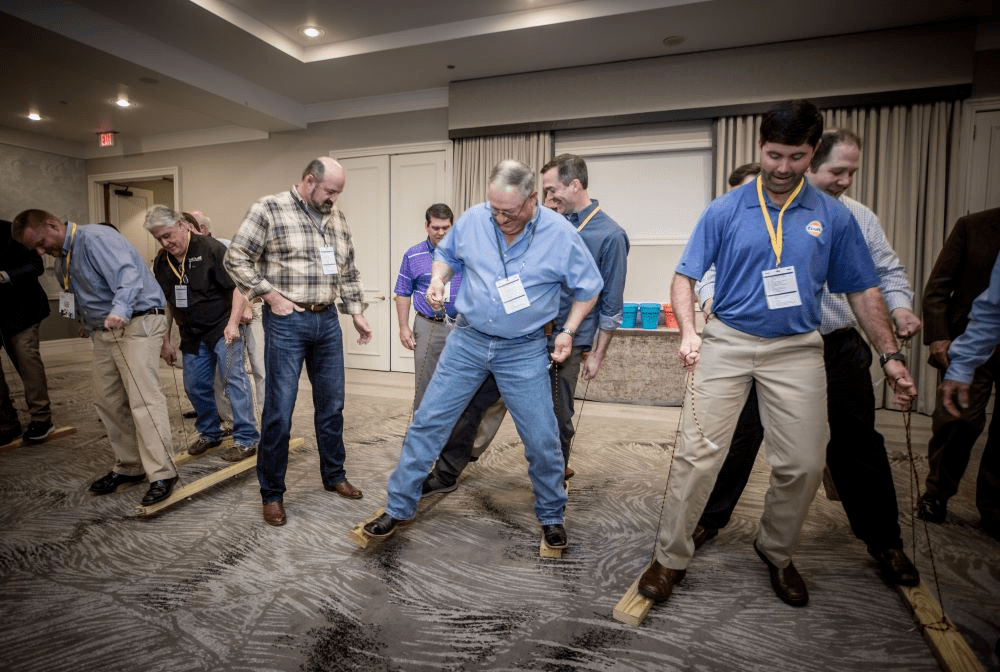
(Credit: Wild Rooster Events)
“One way to be introvert-friendly is to have participants stand in two lines, one opposite another, and prompt them with a conversation starter,” States continued. “After a certain amount of time, one of the lines moves down one and you start the conversation with a new partner. “Introvert-friendly is typically one-on-one instead of speaking out in front of people. It’s really easy to fall into that extrovert world, so make sure you have all of your participants in mind.”
Including downtime in any meeting schedule is also crucial, as overloading attendees with sessions that demand engagement can wear anyone down after a while.
“If there’s not a need or want for engagement, it can be very tiring,” States said, “so there needs to be appropriate downtime for people to disengage, which is really important.”
Meeting Engagement Strategies From an Event Planning Pro
 Event producer and teambuilding facilitator Stewart Mann (pictured), CEO/COO and chief creative officer for Wild Rooster Events, has created programs that break down organizational hierarchical structures for more than 20 years.
Event producer and teambuilding facilitator Stewart Mann (pictured), CEO/COO and chief creative officer for Wild Rooster Events, has created programs that break down organizational hierarchical structures for more than 20 years.
“When I’ve got a thousand people coming in for a conference, I figure out a way to get these people from all these walks of life [to interact]. They typically want to talk to people, but are so scared,” Mann offered. “The hierarchy thing is a very, very common problem. My experience early on was that I always thought that the C-suites were isolated. If there were teams, it would be only a team of C-suites. That’s a bad idea in my opinion.
“That’s the goal of everything we do—to establish a peer-to-peer mentality,” Mann said.
According to Mann, simple ways to establish common ground include providing custom t-shirts to attendees so everyone in the room is wearing the same attire, so it’s not “suits vs. non-suits.”
Also important is to establish commonalities between attendees, such as people who have a similar number of children or pets.
[On Topic: Secrets to Succeeding in the Corporate Sector]
Mann said that it’s also critical to mix up the power structure when selecting group leaders for exercises, gamification and teambuilding events.
“Normally, if you’re a group and you have a C-suite on your team, and you have to pick a captain, you’re going to pick the C-suite, and those people are typically a Type A personality, so they want to be the captain,” Mann said. “[Make sure] they’re constantly having to take on a new role, so the C-suite is not constantly in a power position throughout the entire event. Once they understand, collectively, a struggle may ensue within their team to find out who will fulfill that role, but then they take a step back and figure out they’re competing against other teams, so they then realize that they’re all valuable.”
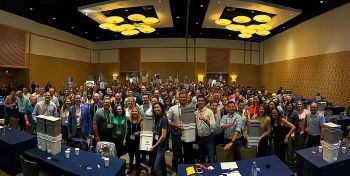 Mann said that it’s important to establish camaraderie from the beginning of the event, and that some discussion up front with the C-suite and Type A attendees can help establish a looser environment in which everyone is comfortable with each other once some of the barriers have been broken down. (Photo credit: Wild Rooster Events)
Mann said that it’s important to establish camaraderie from the beginning of the event, and that some discussion up front with the C-suite and Type A attendees can help establish a looser environment in which everyone is comfortable with each other once some of the barriers have been broken down. (Photo credit: Wild Rooster Events)
“When I get in the room, I will normally try to figure out who the Type As are and who the C-suites are, and I’ll talk to them a little bit and ask if they’re okay with me poking a little fun at them, because that’s a great way to break the ice,” he said. “I rarely have a problem getting one C-suite to say, ‘Bring it on!’”
Mann said that offering gamification elements and activities that give back to charities are a great way to establish a team ethos of pulling together for the greater good, and also for bringing out the true personality of all participants, whether they’re the CEO or the new hire in, say, the accounting department.
“The beauty of a corporate event is it’s not in the office,” Mann said. “What you’re seeing out of them more than likely is the real person. It’s really amazing at the end of an event when you see a [lower level employee] and a CEO smiling, arm to arm, interacting together, when they typically never do that in an office environment. It’s very powerful.”
Innovative Session Formats From MPI
A leader in innovative learning formats for meetings and conventions, MPI offers its MPI Academy Consulting & Speaker Services for planners, CVBs and other meetings and hospitality industry organizations for a variety of education, facilitation and training purposes.
Options include the following:
- Academy speakers and facilitators
- Academy sales training
- Academy corporate training
- Academy consulting
Following are several session format concepts outlined in MPI’s speaker guidelines that are designed to encourage discussion, showcase differences of opinion (in a safe environment) and aid social learning (peer-to-peer) within the context of the session topic and the event itself.
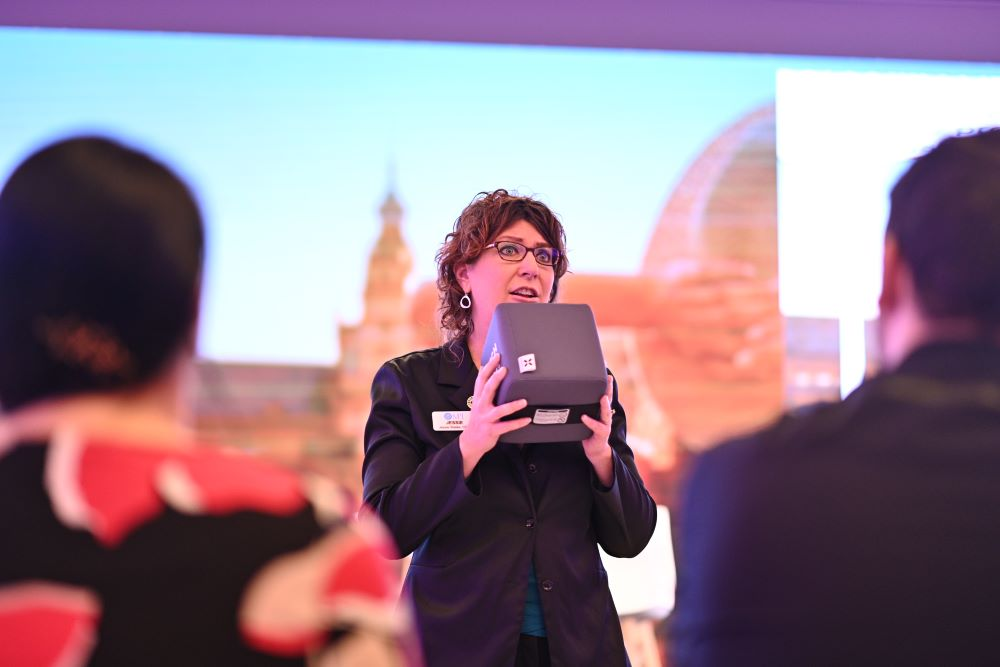
(Photo: MPI’s Jesse States delivers an education session; Credit: MPI)
Dotmocracy
- Purpose: Clarity of Purpose
- Time: 20 minutes
Description: Brainstorm 12 to 15 different challenges related to your session topic and have a volunteer scribe record them on flip chart pages, with four to five suggestions on each page. Tape the pages on the walls of your session room. Using color coding labels, ask your participants to vote using their “dots” on which topics they wish to address.
Pick the top three topics and break your participants into groups of five or six to problem solve, address and/or discuss. If necessary, multiple groups can discuss the same topic, based on interest. Ask the groups to come up with three solutions they want to share at the end of the activity.
Spectogram I
- Purpose: Peer Panel
- Time: 20-30 minutes
Description: Have participants to stand in a line along the wall or in front of the room based on their expertise in a topic related to the subject of your class or presentation. Ask participants who are completely unfamiliar to stand at one end, and then gradually increase expertise, until your most knowledgeable participants are on the other side.
Quietly inquire which of your top subject matter experts (SMEs) would be willing to sit on an impromptu panel. While you get your panelists situated, ask your other participants to form groups of four to five and come up with one burning question for their SME peers. Once the groups have come up with their questions, begin the panel and facilitate the discussion that commences.
[Related: 5 Interactive Learning Formats to Engage, Inform and Inspire]
Spectogram II
- Purpose: Identifying Differences
- Time: 10 minutes
Description: Ask participants to stand in a line along the wall or in front of the room based on their opinion on a certain topic or question. The scale could be completely disagree to completely agree, or it could be a choice between two things (no one can stand in the middle).
Ask those on the extremes to share why they have chosen to stand where they are and see if other people in the line might move to the left or right based on those sentiments. See if you can get your learners closer to a consensus on the topic.
Snowball Fight
- Purpose: Sharing Ideas
- Time: 10 minutes
Description: Ask your participants to write a question, goal, idea or solution on a piece of scrap paper. After everyone has finished, invite everyone to scrunch their papers into balls and then toss them around the room. Ask them to pick up nearby snowballs, turn and throw them again, even further from the original source.
After two minutes, ask everyone to pick up a nearby snowball and read the contents. Ask who would like to share the contents of their new snowball and promote a discussion about the implications of what was written.
[Related: Experiential Events Lead Corporate Meetings Trends]
Upside-down Learning
- Purpose: Student Teaching
- Time: 15 minutes
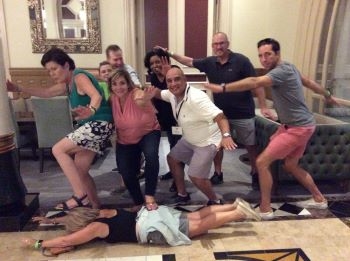 Description: Break your participants into groups of two or three and present them with (two or three) topics or questions related to your session. Within the group, participants will each choose one of your prompts to study.
Description: Break your participants into groups of two or three and present them with (two or three) topics or questions related to your session. Within the group, participants will each choose one of your prompts to study.
Participants will spend five minutes researching their subjects on their devices (mobile, tablet, laptop). After they finish, ask your participants to then teach their subject to the other members of the group. Report out and discuss after. (Photo credit: Wild Rooster Events)
Quescussion
- Purpose: Problem Identification
- Time: 5-15 minutes
Description: This is a discussion that only utilizes questions. Start by writing a question on a flipchart for your participants related to your session topic. Participants may only respond or add to the discussion with more questions. Write each additional question (or facsimile) on the flipchart underneath the original.
Continue until the questions are exhausted. Then, go through each one and discuss as a group why the question relates to the one above it, and what the potential solutions or answers might be to it.
Source: MPI
Connect
Read next: Corporate Events Experiential Trends



